Sometimes we can get so focused on what food we should or should not be eating that we lose sight of the bigger picture. It’s not just the food that matters, it’s how we prepare it.
And the pots and pans we cook with are just as important as the food that goes in them.
If you’re spending your hard earned cash on quality local and organic foods, I sure hope you’re using cookware that enhances the health benefits.
In today’s post, I explore the benefits of one of my favorite cooking vessels, the classic cast iron pan. In addition to covering the benefits of cooking in cast iron, I delve into some of the issues with other types of cookware.
6 Benefits Of Cooking In Cast Iron
1. Naturally Non-stick
Non-stick pans made with Teflon are everywhere these days, but they aren’t good for our health. When heated to high temperatures, and especially when the pan is dry (like when you’re preheating a pan before searing meat or stir-frying), they release chemicals into the air called perfluorinated compounds (PFCs). Scratched non-stick releases even more PFCs into your food. Studies have linked certain PFCs, namely PFOA and PFOS, to numerous health problems relating to hormones, liver dysfunction, and brain health. PFCs are particularly important for mothers to avoid, as it passes through breastmilk. (Environ Sci Technol, 2006)
PFC bioaccumulation has become an increasing public health concern as emerging evidence suggests reproductive toxicity, neurotoxicity and hepatotoxicity, and some PFCs are considered to be likely human carcinogens. – Public Health, 2010
These chemicals not only make their way into your food, but they end up down the drain and in landfills, polluting waterways and ending up back in the food chain (like fish that live in contaminated water). Even worse, they take many years to biodegrade.
But, back to the bright side… When “seasoned” properly, cast iron pans are naturally non-stick, just without the chemicals. For more on seasoning and caring for cast iron, see #2.
2. Easy To Clean
I grew up cooking in cast iron, mostly because that’s what my mom used, and I got used to how easy it is to clean. I remember the first time I cooked a meal in a stainless steel pan I couldn’t believe how much “elbow grease” I had to use to scour off the brown bits. With cast iron, food releases from the pan easily, making clean up a breeze.
Some people find cast iron difficult to care for, so here’s my simple solution. Once your food is ready, simply serve up, emptying the pan. With the pan still hot (and presumably holding it by the handle with a hot mitt) take the pan to the sink and under hot running water, scrape off any food bits with your metal spatula. Return the pan to the stove to dry, wipe with a paper towel dipped in a little oil, and enjoy your meal. (That last sentence is how you maintain the seasoning on your cast iron pan. If you don’t dry the pan and add a little oil, the pan can rust.)
The above method literally takes 30 seconds and saves me from having to scrub the pan and damage the seasoning. If I happen to be lazy and leave the pan dirty, no big deal. I’ll do the above (wash, dry, wipe with oil) and set the pan on the stove on low for 5 minutes to restore the seasoning. Lodge also has a great tutorial on caring for cast iron.
3. Fortifies Food With Iron
How would it sound to have a pan that actually fortifies your food?
Cast iron is it!
While it’s well accepted that cast iron increases iron content of food, few sources actually quantify the change, which always made me question if that was an old wives’ tale. In a little known study from 1965, researchers measured the iron content of 7 foods cooked in cast iron or glass. Acidic foods and those cooked for longer periods of time accumulated the most iron. Tomato sauce, for example, had 87.5 mg of iron when cooked in a cast iron pan, but a mere 3.0 mg when cooked in a glass pan (per 100g serving, which is less than ½ cup). Even non-acidic and quick cooking foods, like eggs and fried potatoes, averaged a five-fold increase in iron content when cooked in an iron skillet.
This is especially good news for menstruating females or pregnant moms who have increased iron needs or, for whatever reason, don’t eat enough iron-rich foods.
4. Cheap
Cast iron remains some of the most inexpensive cookware on the market. A brand new 10 inch cast iron skillet is a mere $25 (and probably $5 at a thrift store). On the other end of the spectrum, a quality heavy-bottomed stainless steel pan that same size will run you over $100. And, because cast iron lasts forever, it’s a one-time purchase. I’ll explain in #5.
5. They Are (nearly) Indestructible
Let me paint you a picture to illustrate my point. A few years ago, I came across a cast iron pan that had been sitting out in the elements for at least a decade. This thing was so corroded, it was almost beyond repair. I’m not really sure what inspired me to attempt to refurbish this thing. A metal scraper was too wimpy to take off the centimeter-thick layer of iron oxide, so I resorted to a thick chunk of scrap steel to scrape off the worst of it (do I sound like a hobo yet?). Then with a little help from a wire brush and a lot of determination, I had that pan looking good as new in an afternoon.
That same pan is part of our outdoor gear and is regularly placed directly over a campfire when we car camp. Like I said, nearly indestructible. And unlike any other cookware, cast iron improves with age. With each use, the cooking surface becomes more smooth, allowing oil to seep into the surface and continually improve the seasoning (or as some like to call it, the patina).
But Teflon coated non-stick pans? If you use a metal spatula by accident once, the thing is trashed. Really though, stop cooking with scratched non-stick (see #1) Even if your non-stick is unscratched, any cookware that requires you use plastic utensils is icky. Cooking with a plastic spatula melts tiny bits of plastic into your food. Ew! Really, there’s no reason to own a non-stick pan (or plastic spatulas) when you have cast iron!
6. Even Cooking Temperature
Cast iron pans are noticeably hefty and their weight is part of their magic, allowing them to hold heat longer than most other pans. This works well, whether you’re searing a steak at a high temp, or simmering a stew on low. If you don’t have the most reliable stove, a cast iron pan can help prevent you from accidentally burning dinner. Non-burnt dinner is always a win!
Now that you understand my fanaticism for cast iron, I’d love to get your opinion.
- Do you cook in cast iron? If so, how do you care for it?
- If you have any questions about cooking in or caring for cast iron, ask below!
Until next week,
Lily
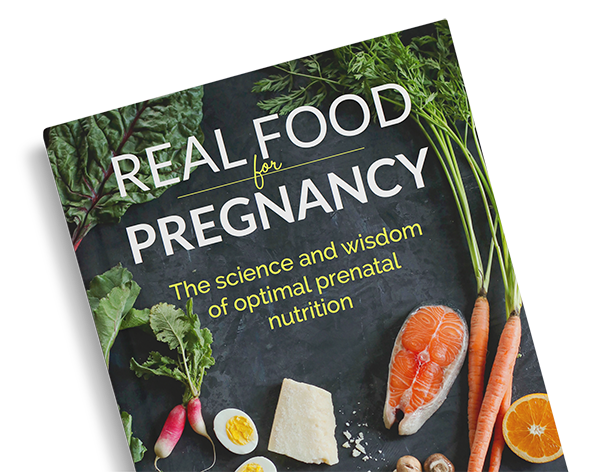
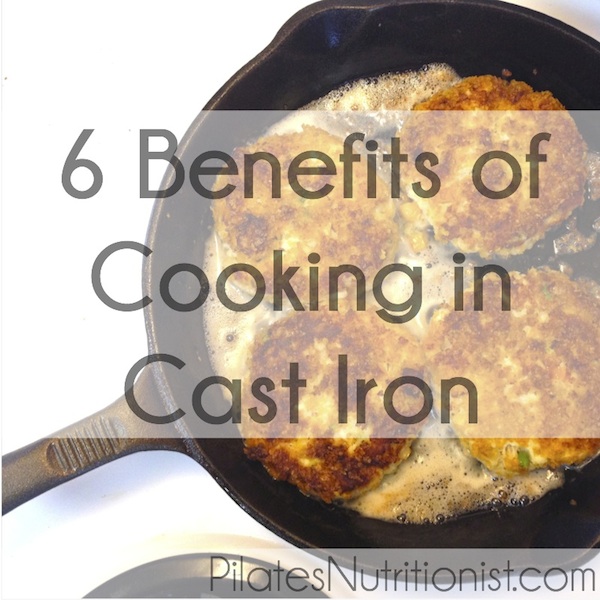
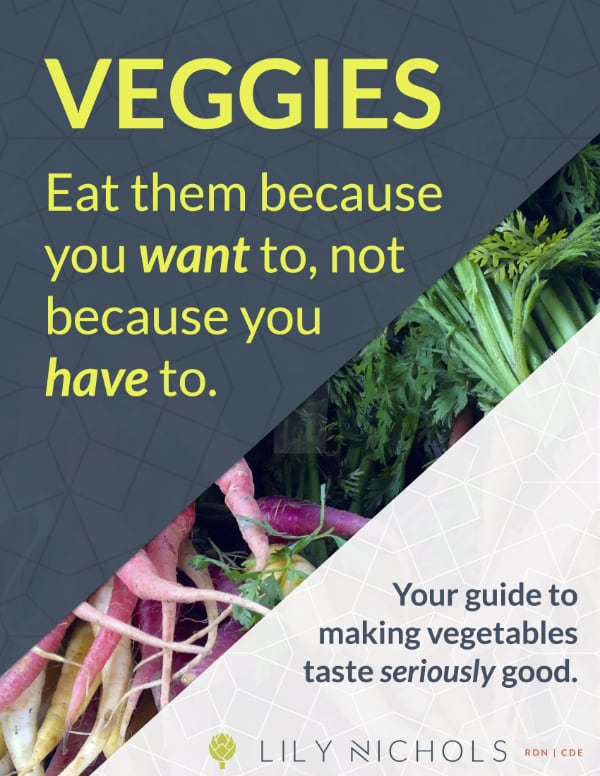

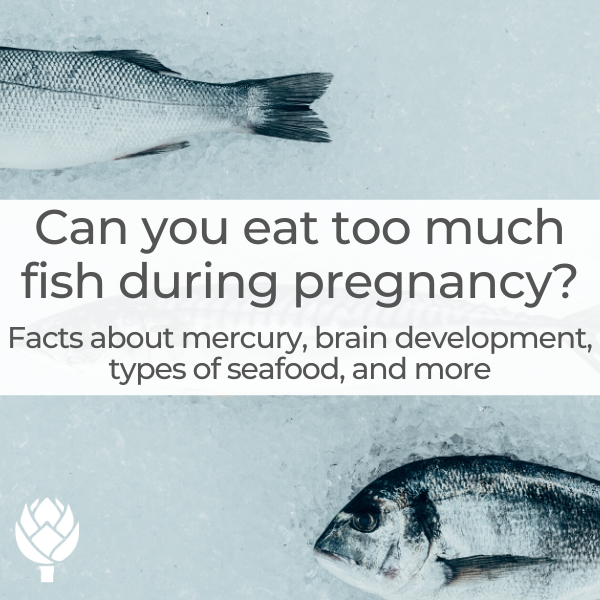
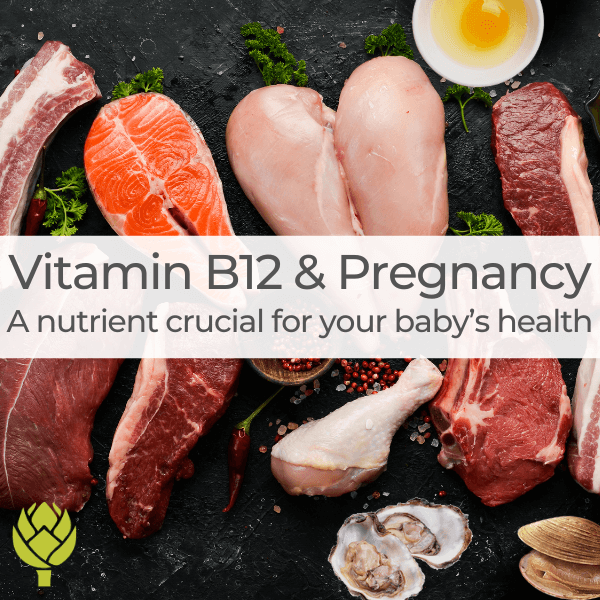
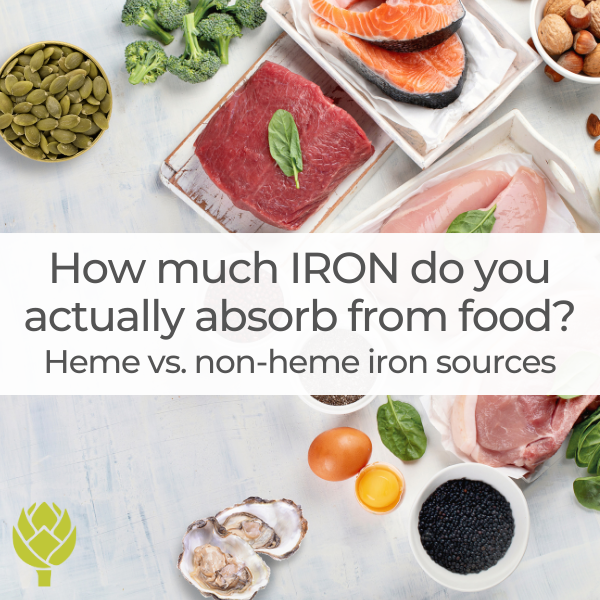

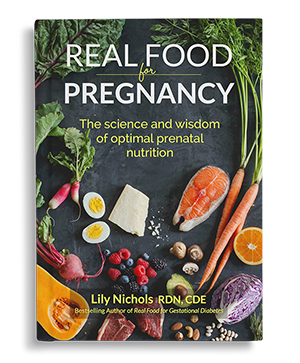
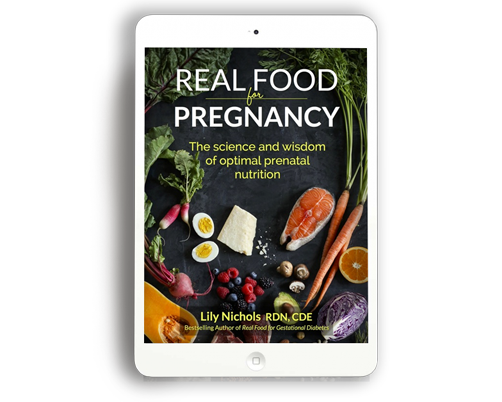
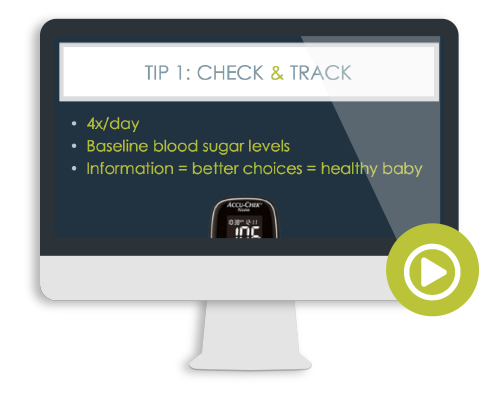
I just bought my first cast iron skillet last week! I find food still sticks to it but I read that you have to use more oil in the beginning to keep food from sticking and that it gets better the more you use it. Fingers crossed!
Welcome to the cast iron club, Erin. Have you tried seasoning it in a hot oven? Lightly coat with oil, place in a 400 degree oven for at least one hour. Turn off the oven and let the pan cool before removing from the oven.
And, yes, when cooking be sure to preheat the pan and use at least 1 Tbsp of oil/fat (if using a large skillet) to prevent food from sticking. You’re right, non-stick surface will continue to improve with each use.
Season it with lard at 250 degrees in the oven for 2.5 hours. Dont wash with soapy water after at anytime
Lily
I’ve been cooking since 1968,, when I got married, and my grandmother gave me the cast iron skillet she used–which was her mothers! I am still using it and it has a perfect non stick patina on it. And I’ve been taking care of it exactly as you suggest.
I love it, Mike! With cast iron, the older, the better.
Lily I can’s cook out of cast iron frying pans because I have hemochromotosis. I use the dreaded teflon. What can I use instead for my omletts?
Laura
You bring up a good point, Laura. Any health conditions that require you limit iron intake means cast iron isn’t appropriate for you. Even stainless steel will leach some iron into food, although less than cast iron.
What you could try is enameled cast iron (Le Creuset). It’ll still moderate the temperature well for omelets (which require low, steady heat), without the iron leaching into the eggs. You’ll need to use some fat to prevent sticking.
Have you looked into pampered chefs nonstick line? I refuse to use Teflon. Their line is safe. I can get you more information if you’d like!
Try mexican made clay pots, they’re glazed (lead free, too) and after curing them in room temperature water for ten hours, they’ll work quite well. They’re not as good as cast iron when it comes to non-stickness (but still quite good) and are a bit brittle, but if properly cared for, they’ll last you for decades.
Lily, what can I use instead of my teflon fryiing pan for cooking omletts in it? I can’t use iron frying pans due to health reasons.
Laura
Thank you, Lily. I’m wondering what are your thought about ceramic?
I’m also a fan of ceramic, TT.
Lily, thank you so much for this post. I have been researching pots and pans, because mine are TERRIBLE. You have helped me make the decision to switch to cast iron. THANK YOU!
I was just talking about this and wondering about the benefits- perfect timing! I love using cast iron but now I’ll use your cleaning ideas. I’ll be sharing this 🙂
Thanks so much, Anne!
Thank you so much for the tips on how to care for and clean your cast iron skillet…it has prevented me in the past from wanting to use mine as frequently as I know I should…And as far as the weight, yes, most definitely hefty! It could easily serve as a weapon if you should ever need one in an emergency (though I’m crossing my fingers that will never have to happen in anyone’s case!!!).
Caring for cast iron pans is way easier than you think, Stacey! Mine is almost permanently on my stove, since I use it every day.
Yes! Yes! Yes! Lily – this is great! One time my husband and I were in a second hand store and found this beautifully seasoned cast iron pot for $15! It was like hitting the jackpot!
What a score, Robin! The older, the better with cast iron.
I love that the simple, natural, toxic free solution is actually the cheapest solution! So often we associate “natural” with expensive 🙂 Great summary of reasons to go green – and ditch the teflon!
I love that, too, Liane! Simplicity wins this round.
A wonderful list Lily. Had to comment here because these are my favorite skillets, even more than stainless steel! And with all the cooking I do…that’s saying a lot!
Glad to have Chef Silvia’s approval on this one!
When my grandma died, I found a 1920 cast iron Dutch oven in her cellar. My sis found its matching skillet and learned how to clean cast iron, so we restored the Dutch oven and skillet. Best idea ever!! I’ve never had a Dutch oven, and this one is amazing. You’re right… Cast iron is indestructible!
That’s so cool, April. With cast iron – the older, the better! The ancient cast iron pans I have are way higher quality than anything you can buy in a store these days.
corroded cast iron can be soaked in part vinegar and part water to avoid real heavy scrubbing…lightly oil and place upside down in 350 degree oven for an hour…turn off oven and let cool…as far as cleaning rinse under hot water either when pan is hot or cool…scrub lightly…my Amish neighbors and some old timers taught me to then put a bit of water in the pan and place it on a burner until all water is evaporated….let cool then lightly oil….
I like to try cooking in cast iron.
This has been a great information for all housewife. Thank you.
Lily,
What a wonderful article! I have been using cast iron for past 16 yrs, the benefits are immense. I use griddles, pans and woks, try to avoid tomatoes and other sour ingredients. For cleaning, I use soap & water and then dry, season with oil and pack in paper bag for storing till next use. Also I’ve noticed certain oils work better to give a non-stick feel for griddles, my favourite is cold pressed peanut oil. A few drops rubbed to the surface of my griddle makes it as good as nonstick.
I’ve been cooking with cast iron for 60 years…I have cast iron pots and pans…I don’t own anything else…
i want to buy it but I wasnt sure of its safety
Mbukiso, cast iron is the best and safest cookware. Unless you have a disease that restricts your iron intake, it is especially good for you as well.
I had a complete set of iron cookware that I had to leave behind when we moved from the east coast to Texas 13 years ago. I recently found out that I am anemic. I’ve never been anemic before in my life! Taking iron supplements causes me gastrointestinal difficulties.
I just purchased a set of iron skillets with a griddle and footed dutch oven. Next visit to the doctor, I’ll bet I’m no longer anemic!
Thanks for all the positive information that I have believed in for years. My reason for looking for information was because a friend questioned my use of cast iron which I use daily cooking for a family of eight.
I also just was given several cast iron products that need much attention so was happy to learn how to do that. I don’t mind staying with a problem until it is completed.
Enjoyed your article.
Martha
I think it is great how you talked about the even cooking cast iron pans can do. My sister just got a new home and is trying to fill the kitchen with new supplies and cookware. This article was really helpful since it mentioned getting a cast iron pan to cook dinner with and have an easy clean up since it is naturally non-stick. I wonder if you can use it for baking too. Thanks for the great information about cast iron pans.
Barbera,
Cast iron pans make the BEST cornbread in the oven! Please give it a try.
I love love love my cast iron pan and cast iron Dutch oven! When properly seasoned the food slides right off! And of course it gets better with age.
I wouldn’t say a new cast iron pan is cheaper to purchase than a stainless steel pan, but you will never ever have to replace it.
A good trick if your to restore a cast iron pan that has rusted is to scrub it with a potato. I found my mother inlaw’s old Dutch oven in the basement one day. Our basement had flooded and the poor Dutch oven was in such a sad state. My husband was about to throw it out, but is saved it!
I gave it some good TLC and in an afternoon she was as good as new!
My favorite cooking to do is with my camping Dutch oven over an open fire! You can cook anything in it!
Wen i cook dal in my iron kadai, after sometime i could see a rim of rust on the neck of kadai. Kindly suggest wat to do.
When you’re done cooking the dal and clean the kadai, use a scrub brush to get the rust off, then “season” it with oil as I describe in the article. It’s still perfectly good to continue to cook with.
My husband bought me a big cast iron skillet 2 years ago. I have only seasoned it in the oven twice. After cooking I let it cool then wipe it out after it is wiped enough to my satisfaction I pour hot tap water in with 1 drop of soap give it a scrub rinse it out then wipe it again to dry it then put some grease in it. I save all my bacon fat for my cast iron. I let it air dry after seasoning it then put it away. This year for Christmas hubby bought me a smaller one since my bigger one was too big for eggs and smaller meals. I seasoned it in my oven twice and it is now ready to go. I do have 1 t-fal pan but trying to talk my hubby into throwing it away. I never use it for myself and refuse to use it I hate it but he thinks it is easier. I read him the health reasons to biff it out from your site and I may have him convinced yet. I grew up on cast iron pan my mom and dad never used anything other than cast iron for cooking. The fact my first pan is 2 years old and still looks brand new says a lot 🙂
Right here is the perfect webpage for anybody who hopes to understand this topic.
You realize a whole lot its almost tough to argue with you (not that I
personally will need to?HaHa). You definitely put a fresh spin on a topic that’s been written about for a long time.
Wonderful stuff, just excellent!
I bought a 12″ wok shaped cast iron pan today (in India) for a bargain price of 550 Rs / £6 / $8.50 . Just cooked.my first curry with it ☺
what is the difference between carbon steel or cast iron?
I love cooking with cast iron. I have a cast iron skillet that belonged to my grandmother. Recently as I was preparing a meal I thought about the age of this pan. I think it is about 100 years old. I never have to season it and very easy to clean. It is so easy to use.
The older, the better with cast iron!
I cooked eggs curry in an iron kadai n the eggs turned black doubtfully i threw away the eggs is it good or bad i done it pl clarify
The above method literally takes 30 seconds and saves me from having to scrub the pan and damage the seasoning. If I happen to be lazy and leave the pan dirty, no big deal. I’ll do the above (wash, dry, wipe with oil) and set the pan on the stove on low for 5 minutes to restore the seasoning. Lodge also has a great tutorial on caring for cast iron.
I noticed , no reply to negative comments on your site.
I recently purchased a cast iron pot, and the box instructions
indicated that
the pot had been pre-seasoned, and could be used as is.
I made a homemade soup in it, and after one hour of simmering my
soup, I started noticing rust forming on the top lid. I hope we do not
get food poisoning from the rust that formed while the soup was
cooking?
I’m not sure that I will use that pot again!!
I will stick with my ceramic pots!
Concerned cast iron pot owner,
Lina.
Hi Lina,
I’ve noticed that some brands of “pre-seasoned” cast iron aren’t seasoned very well. It sounds like that’s what happened with your new cast iron pot. Instead of having a waterproof “seal” on the cast iron, some water was able to seep through. Water + iron = rust. It’s not dangerous, it’s just a sign you need to re-season the pot and the lid. I’d opt for an oven seasoning method for the lid.
This is so great!!! Thanks for the tips!
-Dietetic Student
What are the pros and cons of buying a cast iron pan that is enamel coated. I doubt it will let any other iron come through.
It would heat evenly, like regular cast iron, but it does block the transfer of iron to food if that’s important in your decision. It also doesn’t develop a non-stick surface like a regular cast iron skillet that’s been well seasoned, so you need to use plenty of fat to prevent food from sticking (if searing) or use it for moist cooking methods (like soup, stews, etc.).
I had 2 cast iron pans, one for 40 years the other for 20! One fell off the counter and did not break my tile floor, but the pan broke! And the other one actually got a crack in it, all within a month of each other. So out to get 2 more!
In the beginning…I found cast iron would stick too!!! I have been cooking with cast iron for quite a while now…and it’s the Best!!! I am 64 male and I cook for my wife now…she use to cook for me and our four kids…God Love her…I don’t know how you girls do what you do!!! Anyhow…this is what I have learned…all of my cast iron is of course seasoned…when I cook I never cook on high but medium (except searing steaks or filets) nothing sticks at this temp…also I wash by hand with soap let dry and season before I put it away with canola oil…every time! You’ll get use to it…they are wonderful!!!
What oil do you recommend seasoning with? I know you warn away from using vegetable oils in your book so I’m guessing the same would apply to seasoning. Would it have to be an oil that can stand high heat?
I have good results with avocado or olive oil.
Hello Lily,
Thanks for this great article. Olive oil (not extra virgin) is it? Thank you
Hi Lily,
I have two questions re cooking with cast iron.
1. Is enamel coated cast iron pots/pans ok (such as Le Cruset) or is the coating toxic?
2. Are pre-seasoned cast iron pans ok, is the seasoning suitable or is it best to season yourself?
Your books are amazing and I recommend them to all my patients- thank you
Enameled cast iron is fine, you just won’t get the “iron fortification” aspect for your food or the non-stick quality of a traditional cast iron pan that’s well seasoned. Enameled cast iron is best suited for cooking methods where the bottom of the pan is entirely covered, such as pan frying/frying (oil) or braising (liquid). You also need to be careful not to damage the surface with metal utensils or scrubbing too hard when cleaning.
I’ve always cooked with cast iron. I love it. When I have lots of left over fat I saturate it with lots of salt. That way the fat is absorbed and now a solid I can then put it in the compost. Then, just wash with water and the salt gives a beautiful smooth shiny surface again to my cast iron. I’ve been using the same land for 50 years now.
Hi Lily,
A timely post for me as I have been questioning my Teflon bake ware. I use cast iron pots and pans (which I love and they live on the stove, rarely wash them properly as I find the flavours of previous meals usually blend nicely) but was gifted a Teflon bake ware set and have not felt good about cooking with them.
What sort of cookware do you use in the oven? For say muffins etc?
Thanks for all the work you do!
Lodge makes cast iron muffin tins. If it’s something you use very infrequently (say, you make muffins 1-2x/year), it might not be something worth replacing. If you do continue using them, use a muffin paper liner to minimize transfer of the PFCs to your food.
What about concerns about getting too much iron from cooking in cast iron and it being a health hazard? I recently heard about that and was surprised because I know you sing the praises of cast iron! Would love to know your thoughts on that. (And I really want to get a cast iron skillet!!)
I would love to know the same
Is there any risk of bacterias for pregnant women given cast iron isn’t washed with detergent?
I have been using a Calphalon non stick skillet for years and I started thinking that maybe wasn’t such a good idea. Are they safe? It’s dark on the inside like a Teflon pan. I ordered a skillet today from Lodge
Recently I have been using my cast iron pans as my go to for cooking. They are so versatile. I do however wash them after every meal with soap and water, when dry, I coat them with oil again. It has not harmed them in any way.
I have found that storing them in a paper bag is the trick to not making a mess of your cabinet.
What’s the best way to store your cast iron. I have a glass cooktop and if I leave it up there my cat will go lick it! Can it be stored with things stack on top of it?
Most of mine stays on the stove because we use it so often. But you can certainly store it in a cupboard. Just ensure it’s fully dry and put something between the pans, like a piece of cardboard, to ensure it stays dry and does not rust.
Lily, thanks a lot for this advice!
I am looking what brand to buy. One, I have found is seasoned with soybean oil. As you suggested avoiding soy I guess that skillet is not a good choice, is it?
You can simply wash it and re-season with an oil of choice.
What would you suggest to someone who eats an oil-free diet? Can you still cook with this type of a pan?
I would never suggest an oil-free diet.
I started using cast iron this year. It sautés my vegetables perfectly with a small amount of olive oil. It is easy to care for. I love my cast iron pans.
I’ve fallen in love with my new cast iron pan… I’m a little sad to read that we shouldn’t be cooking for kids in cast iron ? Is this true ? Also is too much iron bad for your health ? I’m confused !
Jessica
Hey – You piece of writings are always insightful and comprehensive. Can you please shed more light if cast irons are non stick. I would really appreciate it.
It sure was nice when you said that properly and seasoned cast-iron pans are naturally non-stick, and they don’t have chemicals. This is something that my husband and I will consider because we are planning to shop for new sets of cookware and a reversible stovetop. We want non-stick items that will not compromise our health, so we will do your tips.
I love cooking in cast iron! I used to use stainless steel until I met my husband who cooked in exclusively cast iron. It makes everything perfectly golden brown and crispy and now I like dinners better the 2nd night because they get the cast iron reheat treatment.